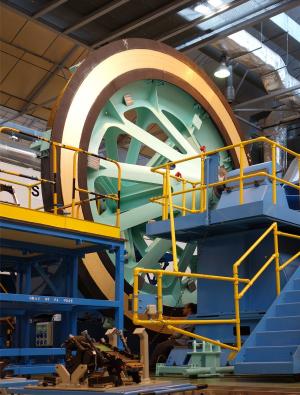Six rings to counter the force
Work on the pre-compression rings of the ITER magnet system is progressing in Europe, where work on a full-scale prototype is underway. These technically challenging components—made of composite materials—are designed to push back against the electromagnetic forces of the ITER machine and reduce the fatigue on the structures of the toroidal field magnets.
The electromagnetic forces acting on the machine structure during operation will be huge—to the order of several hundred meganewtons (MN). Caused by electromagnetic interaction between the toroidal field coil current and the magnetic field generated by the poloidal field coils, these out-of-plane forces will cause stress to the toroidal field coils and, over time, fatigue.


